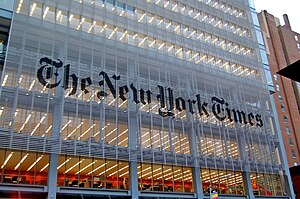The Promise
A recent opinion piece by Alec Appelbaum in the New York Times caught my eye. In “Don’t LEED Us Astray,” Appelbaum wrote about the promise represented by the grand opening of 1 Bryant Park, a new LEED platinum-certified office tower in New York city. The tower is the first to rate platinum, the highest level of certification from the United States Green Building Council’s Leadership in Energy and Environmental Design program, known as LEED, which is recognized as “the most widely used green-building measure.”
The LEED program, which awards points for incorporating eco-friendly material and practices into buildings’ design and construction, has led to a sea change in the industry, introducing environmental awareness into everything from regulatory processes to rents.
But while the standard is well-intentioned, it is also greatly misunderstood. Put simply, a building’s LEED rating is more like a snapshot taken at its opening, not a promise of performance. Unless local, state and federal agencies do their part to ensure long-term compliance with the program’s ideals, it could end up putting a shiny green stamp on a generation of unsustainable buildings.
The Performance Gap
It’s this intersection between market forces and effective change strategies that interests me. Applebaum acknowledges the LEED program was intended to be simply a set of guidelines for architects and engineers, rather than a standard for building performance. But the marketing value of LEED certification is a proven factor driving rental and resale pricing, and that’s where the problem has arisen, which Applebaum clearly recognizes:
Such market-driven motives wouldn’t matter — if LEED in fact measured energy performance. But it can’t: some certified buildings end up using much more energy than the evaluators predicted, because the buildings are more popular than expected or busy at different times than developers forecast, or because tenants ignore or misuse green features. Bike racks merely encourage cycling to work, and operable windows merely offer the opportunity to use less air-conditioning.
The Green Building Council reformed the system last year to reflect actual energy use by having owners report annual performance data. But that’s not enough detail to measure energy consumption accurately, and there’s no clear way to repeal certification if tenants or owners miss their energy-saving targets. As a result, a five-year-old building can turn into an energy hog and still carry its LEED designation.
Solutions
How can we fulfill the promise of improved performance by building on LEED certification guidelines? Applebaum notes the solution “isn’t to replace the system, but to supplement it.” He suggests government agencies provide subsidies and tax credits that could be reduced or eliminated if building performance does not measure up.
We all know money talks, but initiating and establishing such programs at the government level takes time – and I’m wondering if it wouldn’t be more effective as well as faster to simply develop and publicize new norms for post-construction commissioning, as advocated by Yale360, in combination with annual reporting of performance, using the IMVP, or the International Measurement & Verification Protocol. The impact of norms is a well-established principle of behavior change. If every new building, and especially every new LEED-certified building, began publishing its annual energy use measurement and verification report, it might not take long to close the gap between LEED promise and performance.
So, the next time you hear a claim about a building’s LEED certification, how about asking what its annual performance report shows?
Related articles by Zemanta
- Op-Ed Contributor: Making Eco-Friendly Construction Work (nytimes.com)
- Bank of America Tower at One Bryant Park is First Commercial Skyscraper in U.S. to Achieve LEED Platinum (prweb.com)

